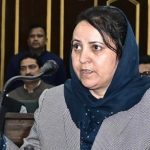As the country celebrates 76th year of its transition to a republic, its journey all through the seven decades has been unprecedented and unparallel. From being dubbed as the land of snake charmers during the colonial period to present day global super power, the country has shown the resilience by taking on various challenges head on. Former Australian Primeminister Tony Abbott recently wrote that, ‘India has emerged as a democratic super power, more than capable of providing the leadership that the world often needs. If a free world has to have a leader after 50 years, it is likely to be India. The lines of Abbott speak in volumes of the growing clout of the country in the world.
After a long and tumultuous struggle that lasted near two decades, the Britishers were forced to declare India as an independent country on Aug. 15, 1947. The day marked the end of foreign dominance and beginning of a new era of self governance and democracy in India. Although India gained independence on August 15, 1947, it was not until January 26, 1950 that constitution replaced the colonial Government of India Act 1935. The Indian constitution was finalized on Nov. 26, 1949, but officially implemented on January 26, 1950. The date was deliberately chosen to honour the historic declaration of Poorna Swaraj by Indian National Congress on Jan. 26, 1930.
As the country completes its 75th year of republic, the day is a reminder of collective spirit and remarkable progress we have achieved all through these years. The country which once had a begging bowl is progressing by leaps and bounds to become the fifth largest economy in the world at present and posing to become third largest economy in the next few years. Every sector of the economy has witnessed revolutionary strides and the world has felt and observed the positive impacts of this entire phenomenon. The country has now set the goal of being a Developed Nation i. e Viksit Bharat by 2047.
Viksit Bharat is a vision for India to become a developed nation focusing on economic growth, social inclusion and environmental sustainability. The goal of Viksit Bharat is impossible to attain without giving due importance to agriculture. The republic day this year is celebrated with the theme Swarnim Bharat: Virasat aur Vikas; Golden India: Heritage and Progress. The theme emphasizes India’s rich cultural legacy while highlighting its strides in development and modernization. A culture very critical for development and playing an important role in progress of nation is agriculture. This culture still engages about 45.8% of working population. If the dream of Viksit Bharat has to be realized and fulfilled by 2047, agriculture sector has to be developed to its full potential.
India from a ‘begging bowl’ after independence changed to a ‘bread basket’ and the fortune changed by what is known as ‘Green revolution’. Dr. Norman E Borlaug was the person credited with the green revolution and from saving millions of lives in India, Mexico and Middle East. Back home, Dr. M. S. Swaminathan took green revolution as a project. The period corresponding to 1967-78 witnessed huge upsurge in food grains production especially in states of Punjab Haryana and Uttar Pradesh. Green revolution spread to millions of third world countries also. Reports reveal that the absolute number of poors peoples fell from 1.15 billion in 1975 to 825 million in 1995. All this happened despite a 60 per cent growth in population. Since the Green revolution of 1960s, India has never looked back.
From a production of 50 million tonnes in the post independence years, the production has now reached the 330 million tonnes mark. As per final estimates for 2022-23 total food grain production in the country was estimated at record 329.68 million tonnes which was higher by 14.07 million tonnes than the production of food grains of 315.61 million tonnes achieved during 2021-22. This has been achieved through a mix of technologies, interventions in agri and allied sectors, policy support and various legislations and reforms. This also has enabled the country to increase the production of food grains by 5.6 times, horticultural crops by 10.5 times, fish by 16.8 times, milk by 10.4 times and eggs by 52.9 times since 1950-51 thus making a visible impact on the national food and nutritional security. Country ranks first in the production of number of crops like Banana, Lime and Lemon, Papaya and Okra.
The horticulture production in the country has exceeded food grains production in the country. The country has the largest area under cultivation. It is the largest producer of pulses, spices, milk, tea, cashew, jute, banana, jackfruit and many other commodities (FAO). It stands second in production of fruits and vegetables, wheat, rice, cotton and oilseeds. India is now the world’s leading rice exporter; accounting for more than 40% of the global rice trade as per the data for the FY 2023 speaks. India has the largest cotton cultivation area all over the world after China and the USA and it is the prime agriculture commodity or fiber crop worldwide.
India is the third highest potato producing country. India is also the second largest producer of Pulses in the world. In 2013, India contributed 25 per cent of the total pulses production of the world, the highest for any country. India is the 3rd highest potato producing country. The major Potatoes producing states in India are Uttar Pradesh, West Bengal, Bihar, Gujarat, Madhya Pradesh and Punjab. The country also has the largest livestock population.
Despite remarkable achievements in the agriculture sector, there has been another side of this achievement. We have not yet been self sufficient in Pulses and Oilseeds. The negative impact and threat posed to our environment by climate change and large scale indiscriminate use of chemical fertilizers and plant protection chemicals to increase the yields are now clearly visible. The ground water has been rendered poisonous and contaminated with harmful chemicals. Such is the infestation that vast stretches of land extending up to kilometers is now not fit for any drinking water. Soils have been degraded, turned barren and a large number of biodiversity has been lost. Biodiversity is on the decline. Yields of crops are not increasing and large scale nutritional insecurity is manifested through children, pregnant and lactating mothers and adolescent girls.
If we are to achieve our goal of Viksit Bharat by 2047, various shortcomings in agriculture sector have to be addressed. The sector needs to embrace technologies which do not interfere with the environment, practices which are sustainable, and farming techniques like diversification and Integrated Farming System Models. At the same time it is also necessary that high value crops be promoted. Although we have attained food security for all, by nutritional security is a concern for all of us. To address nutritional security, a host of initiatives have been started. Biofortification and climate resilient varieties are being developed. A few days back Prime Minister of the country Sh. Narendra Modi released 109 climate resilient and bio fortified varieties of 61 crops including 34 food grain crops and 27 horticulture crops. From a chemical intensive green revolution, we have now to move towards an evergreen revolution based on the principles of natural farming, sustainability, local resource use efficiency, economic viability, social compatibility and profitability. Natural Farming is being promoted all across the country as environmental friendly approach.
In the next two years one crore farmers would be roped in to practice natural farming. For this 10,000 bio-input resource centers would also be established all across the country. Food processing sector is a sunrise sector which can help realize vision 2047. The food processing in the country is at present very low. The food processing sector can be utilized to enhance income opportunities for the rural population, facilitate job creation, minimize food wastage, improve the availability of nutritious foods by enhancing the processing of fruits and vegetables, and augment the proportion of value-added products.
The government of India has also come up with many pro-farmer schemes and programmes which include Primeminister Kisan Samman Nidhi (PMKISAN), Primeminister Krishi Sinchai Yojana (PMKSY), Soil Health Card (SHC), Primeminister Fasal Bima Yojana (PMFBY), and Primeminister Kisan Mandhan Yojana. To attract and retain Youth in agriculture, Entrepreneurship development schemes like Agri-Startups and skill development are being promoted with handholding and financial support to the youth who are interested in setting up agriculture or allied ventures. All these programmes have started showing results. Many youths have left their high earning jobs and started their own startups in agriculture and creating job opportunities for others also. Farmers particularly farm women feel more empowered, youths are now more skilled and the once static farming community is now a dynamic and vibrant one with collective approaches like Farmer Producer Organizations (FPOs).
In the year 2025, India is poised to achieve new heights in food grains production. Agriculture sector is projected to bounce back strongly with growth projections of 3.5-4 percent in 2024-25 up from 1.4 percent in the previous year. The government also announced seven new agricultural schemes in Sep. 2024 with a combined outlay of rupees 13,966 crores. Hopefully the country will scale more heights in the times to come.
(The author writes on agriculture and social issues; can be reached at [email protected])








